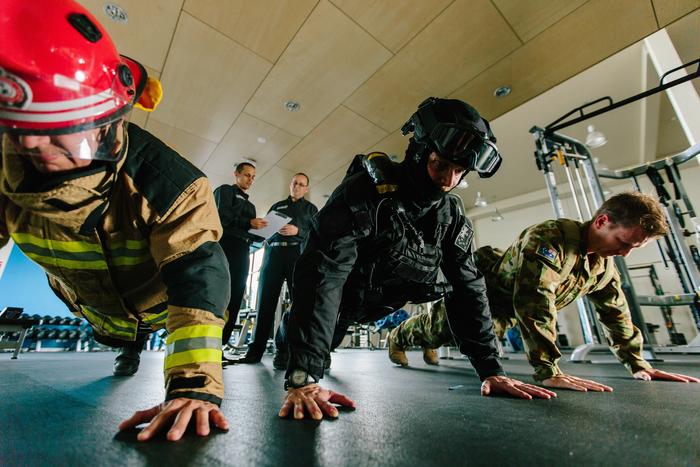Amsterdam, July 25, 2024 – A standard methodology for the development of Physical Employment Standards (PES) in tactical settings like the military and first responder agencies is being used internationally. PES are now being developed for other physically active occupations to support personnel undertaking physically demanding tasks. A special section of an issue of WORK: A Journal of Prevention, Assessment & Rehabilitation, published by IOS Press (now part of Sage), highlights the varying physical elements and requirements for different occupations and the subsequent applications of PES frameworks.

Credit: Bond University.
Amsterdam, July 25, 2024 – A standard methodology for the development of Physical Employment Standards (PES) in tactical settings like the military and first responder agencies is being used internationally. PES are now being developed for other physically active occupations to support personnel undertaking physically demanding tasks. A special section of an issue of WORK: A Journal of Prevention, Assessment & Rehabilitation, published by IOS Press (now part of Sage), highlights the varying physical elements and requirements for different occupations and the subsequent applications of PES frameworks.
Guest editor Professor Rob Orr, from the Tactical Research Unit and Faculty of Health Sciences and Medicine at Bond University in Australia, explains, “Organizations face challenges in the development and implementation of PES. How can they bridge the gap between science and organizational practices? How can they sustain recruitment amid declining fitness levels? And how can they measure success? Another challenge lies in effectively balancing the physical, cognitive, and psychosocial demands in the workplace to ensure that individuals and teams can fulfill all aspects of their job roles, not just the physical requirements.”
The physical elements and requirements for different occupations, and even within occupational subgroups, can vary and as such, job tasks analysis and subsequent PES need to be developed specifically for a given occupation. PES are being used to assess physical capacity in order to ensure that individuals can perform necessary physical tasks safely and effectively. PES can help:
- Establish a baseline level of physical fitness or capabilities required for specific roles
- Mitigate the risk of employing physically unfit individuals in physically demanding jobs, which can be costly, both in human and economic terms
- Ensure that an employee is physically capable of completing the tasks of a job to at least the minimum acceptable standard, and provide employees and potential employees with a target to reach and sustain
- Decrease the potential for injury, thereby providing a “duty of care” to all employees
- Base retirement or transition to a less physical role on capacity rather than an arbitrary age
- Provide feedback on rehabilitation and return to work
- Encourage self-training, self-evaluation and a healthier lifestyle
- Increase confidence of individuals and teams
Dr. Gemma Milligan, the Chair of the PES committee, notes, “Going forward, we envision the expansion of the PES methodology to aid in physical conditioning and return-to-work planning for personnel. Another benefit of the application of PES is that it can support the recording of data to enable the subsequent review and success of PES. Finally, we see the exploration of female/age-inclusive versus female/age-specific solutions as a promising future avenue.”
Editor-in-Chief of WORK Karen Jacobs, OT, EdD, OTR, CPE, FAOTA, Sargent College of Health and Rehabilitation Sciences, Boston University, adds, “I am delighted to publish a special issue that spotlights the diverse physical elements, requirements, and applications of PES frameworks across a spectrum of physically demanding occupations. This issue represents a significant milestone in our understanding of occupational fitness, and it’s incredibly exciting to be at the forefront of such pivotal discussions.”
This special section of the journal WORK contains 16 contributions concerned with the identification of tasks, physical requirements to perform tasks, and assessment batteries and associated outcomes. It is based on the Fourth International Physical Employment Standards Conference on Perspectives, Themes and Future Direction held at Bond University, Gold Coast, Australia, in February 2023, which was attended by researchers, practitioners, and policymakers working within the military, law enforcement, fire and rescue, paramedicine, astronautics, sport, and industry sectors from 10 nations.
Journal
Work
Method of Research
Observational study
Subject of Research
People
Article Title
Special Section: Physical Employment Standards
Article Publication Date
1-Jul-2024




